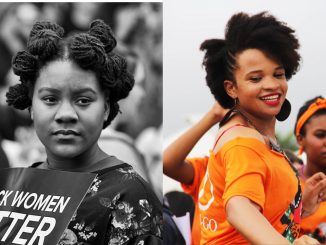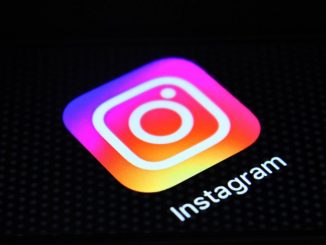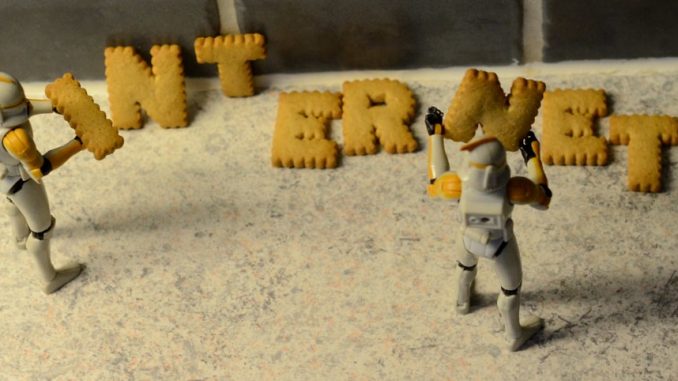
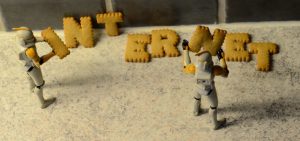
“The cookies of the internet” by Kalexanderson is licensed under CC BY-NC-SA 2.0
The Internet is rapidly assimilating our ever-changing society into a few mainstreams and playing an invaluable role in guiding public opinion. Beauty often comes from differentiation, and the web is rapidly assimilating humans into progressively more homogeneous forms. Scoring mechanisms are now not uncommon in our lives. A wide variety of credit scores are now being accessed in more areas, and inevitably, people’s value is being quantified in numerical form. As described in Black Mirror, scoring mechanisms that affect the distribution of social resources are linked to socialization, as if everything were true. The social relationships formed by social stratification are hard to shake. The temperament, talk and network developed under different social classes are constantly making others evaluate us, and if this evaluation is really counted in the form of scores in various scoring systems, the flow between classes will be more difficult.
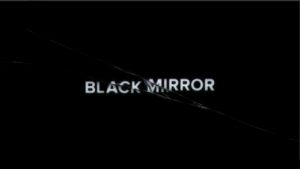
“Black Mirror” by mezclaconfusa is licensed under CC BY 2.0
When socialization is linked to the scoring mechanism.
“The implications of new technologies are not readily available; they are not tied to the technology itself for our consumption”(John, 2016, p24).
The scoring system may not present a strong enough sense of technology, but it is the most similar to the complex environment of current society, which makes it possible for many people to relate to it. “The so-called complication of the idea of total control of the platform algorithm also makes the algorithm of the Alipay credit system does have the ability to split people” (de Kloet et al., 2019, p251). In fact, Alipay Sesame Credit’s rating system and Uber’s two-way rating system are closer to some of the settings in Black Mirror. The similarity lies in the fact that within a certain system, like the rating system, “5-star reviews” can indeed determine the economic benefits of the participants, and even affect their job value, job ranking and future treatment. “Even if users lose their initial interest in the platform, the fact that they have accumulated a history on a platform largely prevents them from abandoning it” (Gillespie 2018, p200).
![]()
“superpay logo with alipay” by mr.Loic is marked with CC PDM 1.0
When it comes to Alipay Sesame Credit, one can’t help but be surprised that the method of improving Sesame Credit score has many striking similarities to Black Mirror, as one can follow the rules step by step and set a plan to complete tasks that reflect one’s credit (such as maintaining a certain amount of Internet spending or expanding offline face-to-face payments), while doing so, one also has the opportunity to meet friends with good credit and high ratings. The system will adjust your score based on your friends’ status. And when these details are put together, they also make you admit that the fictional scoring plot also identifies the corresponding realistic part.

“uber” by stockcatalog is licensed under CC BY 2.0
“The platform constantly calls on its users to “rate” and “flag” so that Uber can detect customer expectations based on user ratings” (Jose Van Dijck et al., 2018, p45).
Currently, one of the means that Uber uses to manage its car drivers is precisely the same rating software, which allows users to rate Uber drivers with anywhere from one to five stars based on their own judgment. In turn, Uber drivers can rate their passengers. However, there is an imbalance in this “mutual rating”. The driver is dependent on the rating to decide the future direction of his job, which is a disguised demand for survival, while the passenger enjoying the service is more of a demand for material enjoyment. In this way, the problem of “power abuse” and “tinted glasses” caused by this two-way rating system is also one of the extended topics in Black Mirror.
The rating system is the “incarnation” of the social value system, circle and group consciousness.
Changes in the technological revolution of the Internet

“New Look” by DeclanTM is licensed under CC BY 2.0
The modern society with a high division of labour almost leaves many people without the energy to understand the field outside of their own work, and the Internet revolution after the present, the network has become part of our lives, and only programmers understand precisely how it works, which can be said to be a situation that almost never happened in human history, but it is the reality exists.
“Persistence means that “computing resources are repositioned, not just replaced,” and that this change “takes place conservatively through mutation and hybridization, rather than a radical break with the past” (Abbate, 2017, p10).
Likewise, the Internet has become the diverse model it is today through constant changes over time. Take Alipay payment as an example, nowadays we pay through online non-face-to-face transactions, no longer like before to master the whole process of cash payment, but only the beginning of the confirmation of payment and the results of a successful payment is known to us, as for the middle of the tedious and complicated process is actually basically unknown. This historical shift, which has been repeated several times, has finally reached a critical point where the separation of the factory and the store, i.e. the result of production instead of the production process, has become the focus of one of the important signs of modern society. Black Mirror also happens to borrow these familiar elements to explain that the Internet is a medium that can change human beings in various ways, and warns people to enjoy the convenience brought by the constant updating of the Internet, but also to maintain reverence, while not being easily assimilated or even alienated in the process, and not to let the tools of life change human attributes and become the nature.

“tasty world” by new 1lluminati is licensed under CC BY 2.0
Modern society and the world of the Internet are permeated by power relations, while at the same time affecting the rights and freedoms of those of us who live in them.
“Given that different technological contexts seem to lead to strikingly similar institutional structures, a media ecosystem of a rather limited number of powerful gatekeepers is inevitable, generated by larger institutional and economic forces and innate audience behavioural tendencies “(Napoli, P. M. 2018, p237).
The information age has transitioned from the former surveillance society to today’s control society. In the control society, individuals become divisible, and the masses become samples, data, markets or banks. The recognition of face technology is gradually spreading, but the fact is that there is no legal authorization for the collection of personal facial information. People think that face recognition has brought convenience and security to life, but in fact, the risks of the operation of power in the link of collection, storage and use of face data are also unseen.
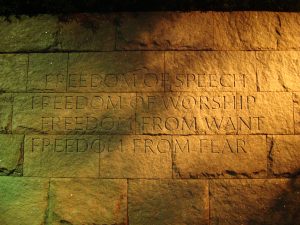
“FDR Memorial: 4 Freedoms Quote” by IslesPunkFan is licensed under CC BY-NC 2.0
“The Internet in a controlled society should also be free because it is designed to enable people to develop authentically and autonomously” (Four Internets: The Geopolitics of Digital Governance, 2018, p3). The mechanisms of power in life are in fact an automated taming in disguise. People have no will or ability to resist power, which is diffused into invisibility, and individuals are carefully woven into the web of power. No privacy means no freedom. Facial recognition technology, and even unknown technologies in the future, could potentially hold all data about people in their hands. Perhaps it is time to take a sober look at the need for technology like facial recognition to be used in every aspect of life, the accuracy of the threat to which a country or company is exposed if it does not use facial recognition technology, and the rationality of daily procedures so cumbersome that they need to be handed over to invisible power, given the great convenience of today.
 “power” by blacktsuba is licensed under CC BY-SA 2.0
“power” by blacktsuba is licensed under CC BY-SA 2.0
The origin of technological development comes from the inertia and desire of human beings. And we are bringing these emotional products into more and more social areas, such as the use of scoring mechanisms under big data instead of artificial social governance and produce hierarchical power division. By expanding these subtleties by several orders of magnitude, the network becomes a huge influence in culture, public opinion and even every aspect of life. The most frightening aspect of this influence is its uncontrollability: a company or organization can influence the direction of our public intentions by publishing a large amount of the same kind of information, thus pressuring or profiting from a certain party. What Black Mirror shows is not the evil that comes from technology, but human nature. Technology does not do evil on its own, it is human.
Reference:
John, N. A. (2016). The age of sharing. Polity. 24-40.
Black Mirror (TV series 2011-2016, Channel 4/Netflix)
Jose Van Dijck, Poell, T., & Martijn De Waal. (2018). The platform society. Public values in a connective world. Oxford University Press. 32-48.
Abbate, J. (2017). What and where is the Internet? (Re)defining Internet histories. Internet Histories, 1(1-2), 8–14. https://doi.org/10.1080/24701475.2017.1305836
Four Internets: The Geopolitics of Digital Governance. (2018, December 7). Centre for International Governance Innovation. https://www.cigionline.org/publications/four-internets-geopolitics-digital-governance/
de Kloet, J., Poell, T., Guohua, Z., & Yiu Fai, C. (2019). The plaformization of Chinese Society: infrastructure, governance, and practice. Chinese Journal of Communication, 12(3), 249–256. https://doi.org/10.1080/17544750.2019.1644008
Gillespie, T. (2018). CHAPTER 8. What Platforms Are, and What They Should Be. In Custodians of the Internet: Platforms, Content Moderation, and the Hidden Decisions That Shape Social Media (pp. 197-214). New Haven: Yale University Press. https://doi-org.ezproxy.library.sydney.edu.au/10.12987/9780300235029-008
Napoli, P. M. (2018). What If More Speech Is No Longer the Solution? First Amendment Theory Meets Fake News and the Filter Bubble. Federal Communications Law Journal, 70(1), 55+. https://link.gale.com/apps/doc/A539774158/ITOF?u=usyd&sid=bookmark-ITOF&xid=f1a8a268
“Black Mirror” by mezclaconfusa is licensed with CC BY 2.0. To view a copy of this license, visit https://creativecommons.org/licenses/by/2.0/
“Superpay logo with Alipay” by Mr Loic is marked under CC PDM 1.0. To view the terms, visit https://creativecommons.org/publicdomain/mark/1.0/
“Uber” by stockcatalog is licensed with CC BY 2.0. To view a copy of this license, visit https://creativecommons.org/licenses/by/2.0/
“New Look” by DeclanTM is licensed with CC BY 2.0. To view a copy of this license, visit https://creativecommons.org/licenses/by/2.0/
”Tasty world” by new 1lluminati is licensed with CC BY 2.0. To view a copy of this license, visit https://creativecommons.org/licenses/by/2.0/
“The cookies of the internet” by Kalexanderson is licensed with CC BY-NC-SA 2.0. To view a copy of this license, visit https://creativecommons.org/licenses/by-nc-sa/2.0/
“Power” by blacktsuba is licensed with CC BY-SA 2.0. To view a copy of this license, visit https://creativecommons.org/licenses/by-sa/2.0/
“FDR Memorial: 4 Freedoms Quote” by IslesPunkFan is licensed with CC BY-NC 2.0. To view a copy of this license, visit https://creativecommons.org/licenses/by-nc/2.0/
